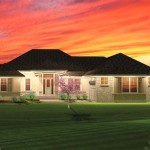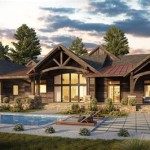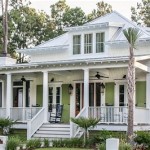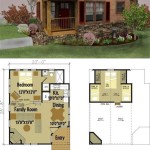A-Frame Tiny House Plans: Your Guide to Building Dream Homes
The allure of tiny house living is undeniable: a simplified lifestyle, reduced expenses, and the freedom to live where you desire. And among the various tiny house designs, the A-frame stands out for its unique blend of architectural charm and practicality. This article will guide you through the process of crafting your dream A-frame tiny house, from understanding its advantages to navigating design considerations and construction techniques.
Advantages of A-Frame Tiny Homes
The A-frame design offers several compelling advantages, making it a popular choice for tiny house enthusiasts:
-
Space Optimization:
The triangular shape maximizes vertical space, allowing for lofted sleeping areas and a sense of openness. This is particularly beneficial in compact structures. -
Structural Strength:
The inherent triangular geometry of an A-frame provides exceptional structural strength, making it resilient against wind and snow loads. This is crucial in areas prone to extreme weather conditions. -
Aesthetic Appeal:
The distinct A-frame silhouette is instantly recognizable and exudes a charming, rustic aesthetic. This design can seamlessly blend into various landscapes, from mountain slopes to lakeside settings. -
Construction Efficiency:
Due to its simple form, building an A-frame tiny house can be relatively efficient and less labor-intensive than other architectural styles. This can translate to faster construction times and potential cost savings.
Designing Your A-Frame Tiny House
Designing an A-frame tiny house involves addressing various aspects, from functionality to aesthetics. Here's a breakdown of key considerations:
1. Floor Plan and Layout:
The primary focus should be on creating a functional layout that meets your daily needs. Consider the placement of essential areas like the kitchen, bathroom, living space, and sleeping loft. The limited square footage demands creative space management, maximizing vertical space and incorporating multi-functional furniture. For example, a sofa that converts into a bed or a dining table that folds down into a work surface saves valuable floor space.
2. Roof Pitch and Height:
The roof pitch, or the angle of the roof, significantly influences the interior space and overall aesthetic. A steeper pitch maximizes headroom in the loft area but might increase the cost of construction due to more roofing material. A shallower pitch provides a more spacious living area but might limit the loft area. The height of the A-frame also impacts the usable space, determining how much headroom is available.
3. Windows and Lighting:
A-frame houses are known for their generous use of windows, offering panoramic views and abundant natural light. The placement and size of windows play a crucial role in maximizing sunlight and creating a welcoming ambiance. Consider incorporating large windows that provide breathtaking views and strategically placed skylights to maximize light penetration.
4. Exterior Finishes:
The exterior finish of your A-frame tiny house should complement its surrounding environment and reflect your aesthetic preferences. Choices range from traditional wood siding to more contemporary materials like metal panels or composite cladding. The selected material should be durable, weather-resistant, and aesthetically pleasing. Additionally, consider incorporating sustainable materials and energy-efficient features to minimize your environmental impact.
Construction Techniques
Building an A-frame tiny house requires a solid understanding of construction techniques. It's advisable to work with experienced builders or consult with professionals throughout the process:
1. Framing:
The foundation of the A-frame is the frame, typically constructed with timber or engineered lumber. This involves creating the two main rafters that form the A-shape and connecting them with horizontal beams for structural support. Ensure that the framing is properly joined and secured to withstand the load of the roof and other elements.
2. Roofing:
The roof of an A-frame house requires careful planning and execution, as it plays a crucial role in weather resistance and energy efficiency. The roof pitch dictates the amount of roofing material needed and the type of roofing system suitable. Common choices include shingles, metal roofing, or tile, depending on the climate and aesthetic preferences.
3. Insulation:
Adequate insulation is essential to maintain a comfortable temperature year-round. This is particularly important for A-frame houses, which have a large surface area exposed to the elements. Consider using high-performance insulation materials, such as fiberglass batts, spray foam, or cellulose, to maximize energy efficiency and reduce heating and cooling costs.
4. Finishing Touches:
Once the structure is complete, you can focus on the finishing touches, including interior design, flooring, and plumbing and electrical systems. Choosing sustainable materials and incorporating energy-efficient appliances contribute to a healthier and more sustainable living environment.

A Frame Tiny House Design Build Living Guide United Homes

Small A Frame House Plans

Floor Plans For Tiny Houses Bestselling A Frames Cabins Sheds Craft

A Frame House Plans Everything You Need To Know Field Mag

Unique Small House Plans A Frames Cabins Sheds Craft

6 Dreamy A Frame Tiny House Plans For Cute And Functional Getaway

A Frame House Plans Everything You Need To Know Field Mag

Diy Tiny Houses The Ultimate How To Guide

9 Best A Frame House Kits Prefab Cabin Designs Field Mag

Floor Plans For Tiny Houses Bestselling A Frames Cabins Sheds Craft
Related Posts








